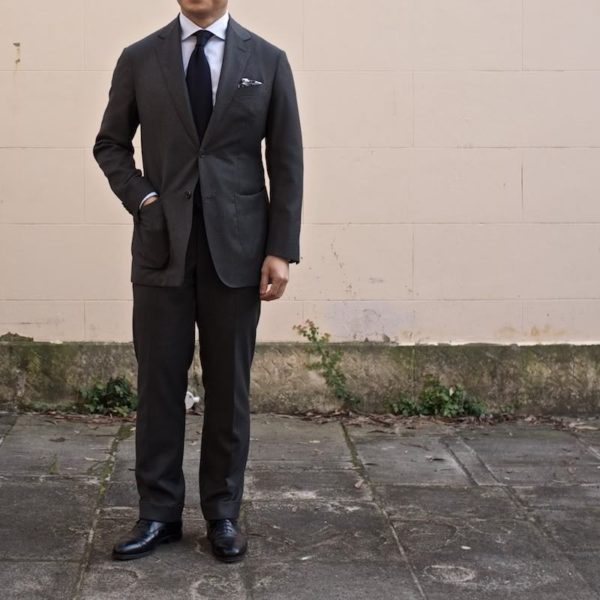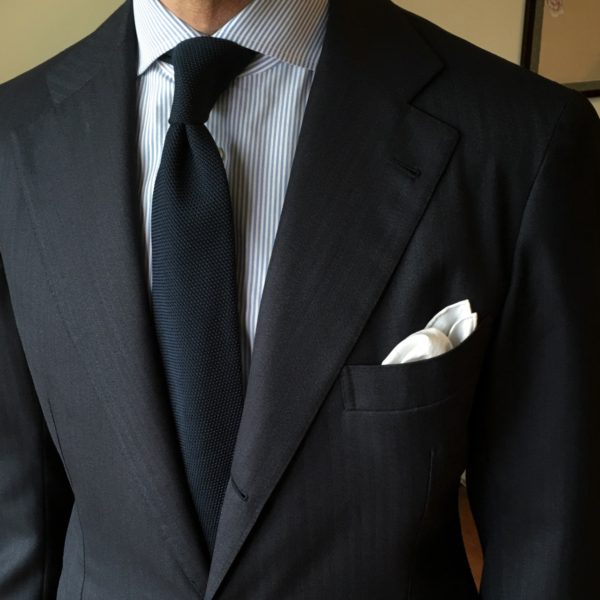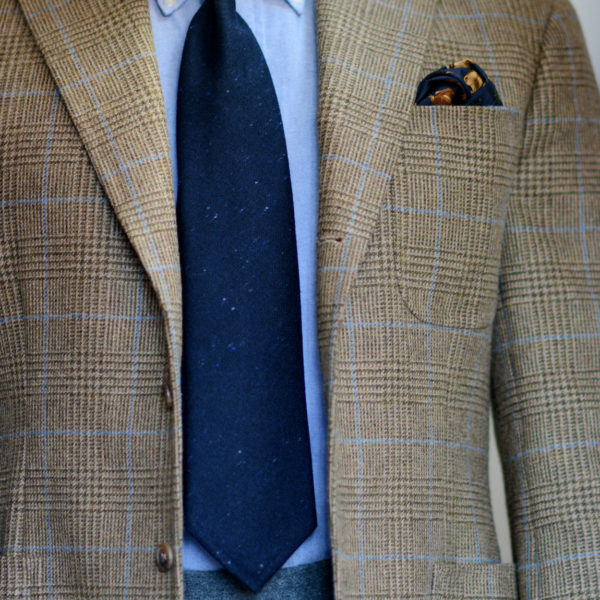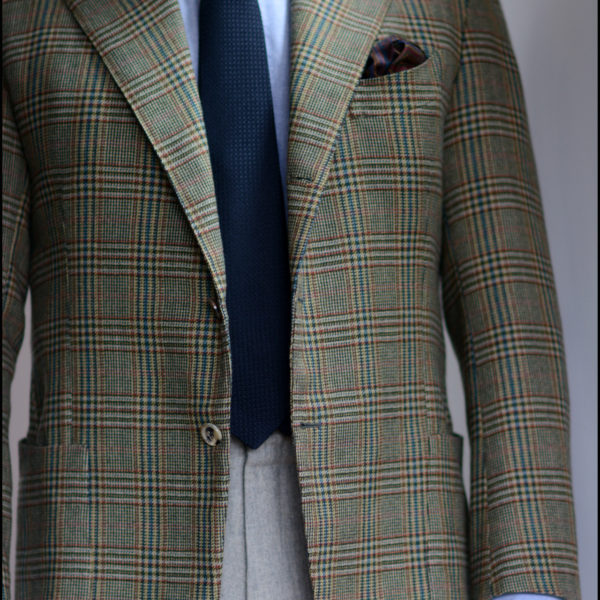
It’s no secret to anyone who’s been reading our blog for a while, but a solid-colored navy tie goes with everything. It’s a useful reminder though for anyone looking to build a wardrobe on a budget, hoping to save time when getting dressed in the morning, or trying to pack light for a trip.
The advantage of a solid navy tie is simple: it adds sophistication to a basic sport coat or dark suit, but can also anchor a patterned jacket. They may not be the most interesting of options, but they’re always supremely tasteful. The key to wearing one well, however, is to pay attention to the material. Not all solid navy ties are the same, as some can be more seasonal or formal than others. Here are a few popular options:
- Silk Twills: Your most basic solid navy tie. Twill is a type of weave with diagonal ribs, much like you see on your jeans. I find them to be a bit formal, so I only wear them with suits, but our friend Pete in San Francisco looks great in his silk twill tie and worsted checked jacket. You can find them in more subtle or pronounced weaves, but note: ones with sheen will always look a little dressy.
- Grenadines: A specific kind of honeycomb-like weave. The added texture lends visual interest to solid-colored jackets, while the plain color makes them easy to wear with anything patterned. For affordable options, see Chipp, Exquisite Trimmings, and Kent Wang. If you have more money to spend, check out Drake’s, EG Cappelli, and Sam Hober.
- Wools and Cashmeres: A great option for fall/ winter. They add a cozy feel to your worsted suits and navy blazers, while also accentuating the autumnal sensibility of flannel suits and tweed jackets. Something with mottling will look a little more casual than something solid, but you can generally wear these with anything (so long as the weather is cold).
- Linens: The spring/ summer equivalent of your wool ties, but a bit more casual. Pure linen will wrinkle a more than a linen-blend, but that’s also part of the charm. Pair these with softly shouldered casual suits and sport coats, such as those made from cotton, linen, or tropical wool.
- Tussah, Matka, and Raw Silks: A textured tie for spring/ summer. Tussahs feel light and airy; Matkas have a rough basketweave; and raw silks are the most slubby of the three. Any of these would be too casual for business, but they’re perfect for a smart, causal look on a hot day.
- Knits: The most casual of all the options here. A little skinnier and floppier than a traditional four-in-hand, they help dress down a tailored jacket (including those for suits). Keep cotton knits to spring/ summer; wool knits to fall/ winter. Silks can be worn year round and come in all sorts of designs.
- Satin: A flat silk with a lot of sheen. Good for evening wear, as satin reflects a bit of light at night, but it can look cheap in the harsh light of day. Keep these to suits and evening parties.
- Miscellaneous: Of course, there are dozens of other variations. Vanda Fine Clothing, for example, has solid navy ties in a zig-zag silk blend, wool hopsack, and blue nailhead. The way to think about anything off the beaten path: ties with a bit of sheen will look more formal than something matte; ones with a smoother surface will look dressier than something textured. The color, however, will go with anything.
My recommendations: Get a heavy silk twill if you mostly wear business suits (7-folds feel especially luxurious), but a grenadine if you want something with a bit more versatility. A few seasonal options can also be nice: a wool/ cashmere tie to go with your tweeds and flannels, then a textured silk to pair with that cotton or linen jacket. They’re not strictly necessary, but it’s nice to have options – even if you’re trying to simplify.
(photos via Guido Wongolini, Urban Composition, and Voxsartoria)








